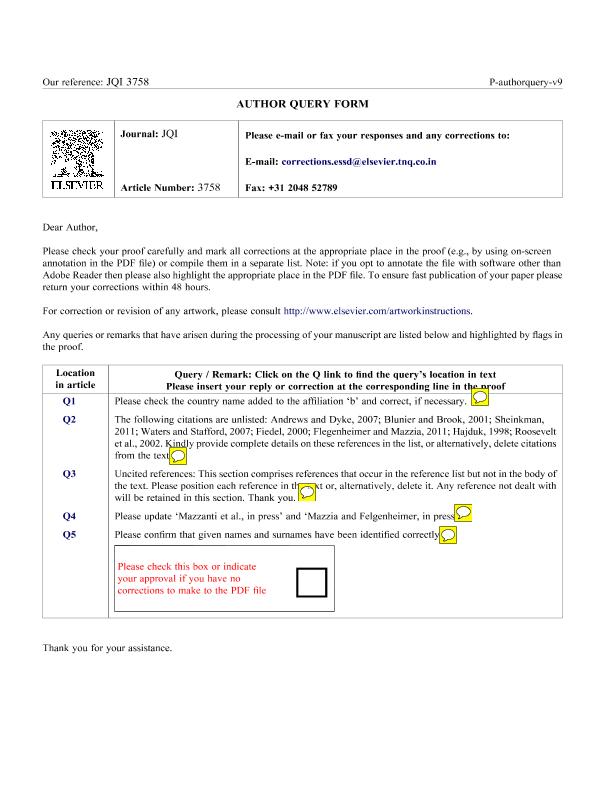Mostrar el registro sencillo del ítem
dc.contributor.author
Rabassa, Jorge Oscar

dc.contributor.author
Ponce, Juan Federico

dc.date.available
2017-10-17T18:27:03Z
dc.date.issued
2013-04
dc.identifier.citation
Rabassa, Jorge Oscar; Ponce, Juan Federico; The Heinrich and Dansgaard-Oeschger climatic events during Marine Isotopic Stage 3: Searching for appropriate times for human colonization of the Americas; Elsevier; Quaternary International; 299; 4-2013; 94-105
dc.identifier.issn
1040-6182
dc.identifier.uri
http://hdl.handle.net/11336/26736
dc.description.abstract
Marine Isotope Stage 3 (MIS 3) was an interstadial stage, a relatively warm climatic period which developed roughly between 60 and 50 and 30 cal. ka BP. Several very cold periods, known as Heinrich (H) events, developed during MIS 3 as a result of partial collapse of the North American ice sheet margins, with formation of huge amounts of icebergs which, after melting in more temperate latitudes, would have inundated the North Atlantic Ocean with low salinity waters which would have impeded the reach of the Gulf Stream into the North Atlantic Ocean. Several paleoclimatic moments with relatively warmer conditions, known as the Dansgaard-Oeschger (D-O) events, took place in between the Heinrich (H) events, throughout MIS 3. These H and D-O cycles would have been very short (perhaps even only around 1 ky each in some cases) and intense, with mean annual temperatures in the area of Beringia ca. 5–8 C° higher than those active at the Last Glacial Maximum (LGM; ca. 24 cal. ka B.P.) and perhaps close to those occurring in past interglacial periods, respectively. Even though climate was warmer, total melting of the continental ice sheets did not take place; thus, global sea level was perhaps still low enough to allow the persistence of the Beringia land bridge between Siberia and North America, without any interruptions throughout the entire MIS 3. The aims of this paper are to present paleoclimatic and paleogeographic information about MIS 3 and to discuss the most favorable chronology for human displacement through Beringia. At the times of MIS 3, there would have been no coalescence between the Laurentide and Cordilleran ice sheets; thus, both the hinterland path from Beringia southwards and the coastal route would have been open and enjoying moderate climate ecosystems, and thus available for humans. In this case, it is now possible to suggest possible moments for human penetration in North America, sometime between ca. 60–50 to 28 cal. ka B.P, during one or more D-O events (most likely sometime between the D-O 16 and D-O 3 events) throughout MIS 3. Other routes of human colonization of the Americas following other routes rather than that of Siberia-Beringia, if they ever existed, are not discussed in this paper.
dc.format
application/pdf
dc.language.iso
eng
dc.publisher
Elsevier

dc.rights
info:eu-repo/semantics/openAccess
dc.rights.uri
https://creativecommons.org/licenses/by-nc-nd/2.5/ar/
dc.subject
Marine Isotope 3
dc.subject
Paleoclimatology
dc.subject
Late Pleistocene
dc.subject
Human Peopling Of the Americas
dc.subject.classification
Oceanografía, Hidrología, Recursos Hídricos

dc.subject.classification
Ciencias de la Tierra y relacionadas con el Medio Ambiente

dc.subject.classification
CIENCIAS NATURALES Y EXACTAS

dc.title
The Heinrich and Dansgaard-Oeschger climatic events during Marine Isotopic Stage 3: Searching for appropriate times for human colonization of the Americas
dc.type
info:eu-repo/semantics/article
dc.type
info:ar-repo/semantics/artículo
dc.type
info:eu-repo/semantics/publishedVersion
dc.date.updated
2015-06-11T18:20:39Z
dc.journal.volume
299
dc.journal.pagination
94-105
dc.journal.pais
Países Bajos

dc.journal.ciudad
Ámsterdam
dc.description.fil
Fil: Rabassa, Jorge Oscar. Consejo Nacional de Investigaciones Científicas y Técnicas. Centro Austral de Investigaciones Científicas; Argentina. Universidad Nacional de Tierra del Fuego; Argentina
dc.description.fil
Fil: Ponce, Juan Federico. Consejo Nacional de Investigaciones Científicas y Técnicas. Centro Austral de Investigaciones Científicas; Argentina
dc.journal.title
Quaternary International

dc.relation.alternativeid
info:eu-repo/semantics/altIdentifier/url/http://www.sciencedirect.com/science/article/pii/S1040618213002267
dc.relation.alternativeid
info:eu-repo/semantics/altIdentifier/doi/http://dx.doi.org/10.1016/j.quaint.2013.04.023
Archivos asociados
